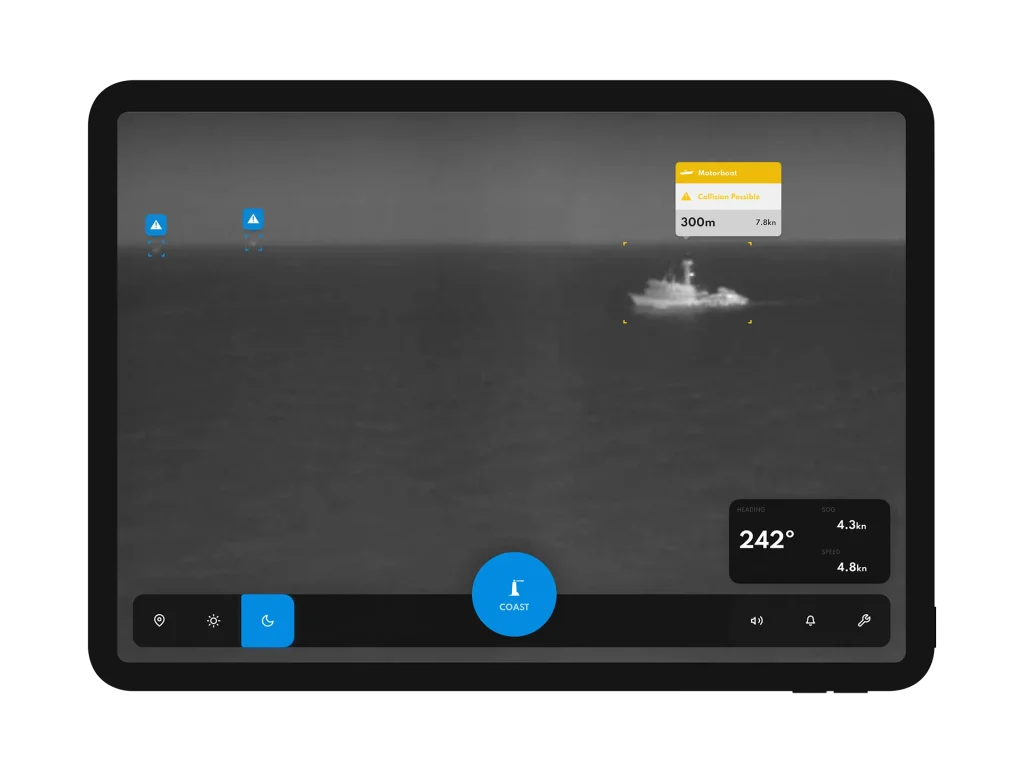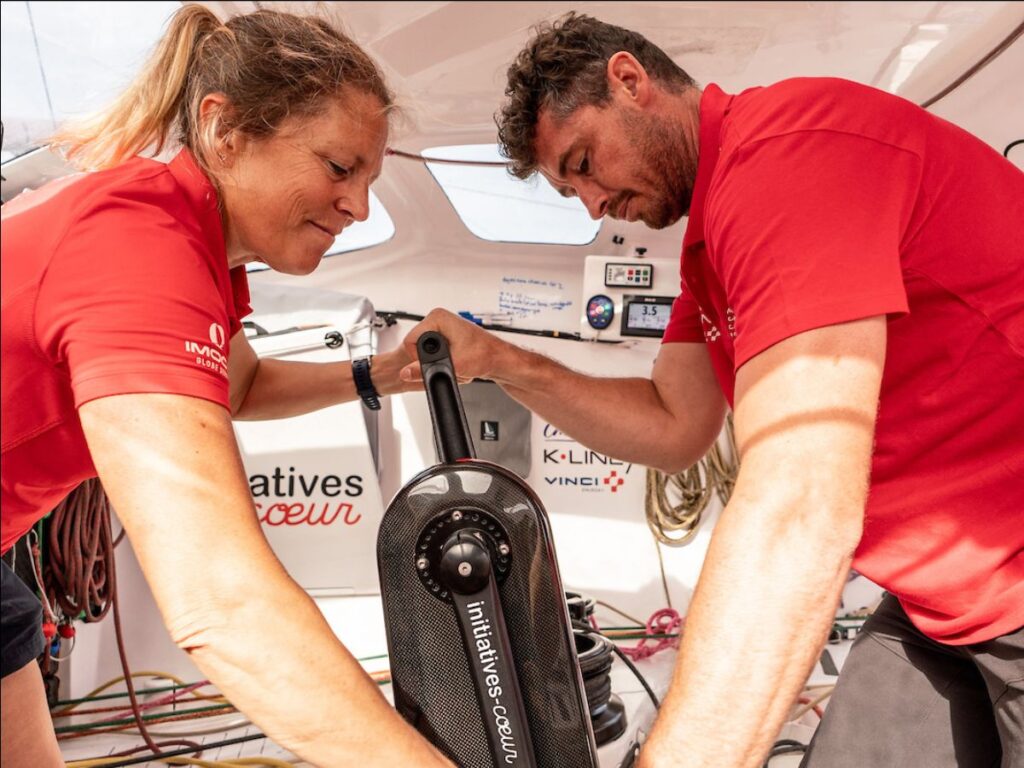Home » Providing Machine Vision to Vendée Arctique
SEA.AI Machine Vision will provide vital added safety for the solo IMOCA skippers competing in the Vendée Arctique that starts on Sunday (12th June) from Les Sables d’Olonne, France.
Collision with anything from other vessels to floating objects, such as logs, buoys or containers, poses a significant threat to singlehanded sailors, especially in reduced visibility or at night. In addition, a collision during a race that damages a yacht can mean that the skipper has to reduce performance or, at worst, abandon the race.
Pierre-François Dargnies, Technical Director of the Charal Sailing Team confirms: “CHARAL has been collaborating with BSB since the beginning of the OSCAR project and the progress made on UFO detection is excellent. Even if zero risk does not exist, each detection enables the skipper to be informed and draws his attention to a possible danger. Perfectly complementary to radar and AIS, SEA.AI is permanently switched on at sea.”
When fitted, SEA.AI creates an accurate, live digital mapping of anything on the water’s surface ahead of their vessel. If SEA.AI determines anything to represent a collision threat, then it sounds an alarm, warning the skipper of this danger.


For example, during the last Transat Jacques Vabre, skipper of Initiatives Coeur, Samantha Davies, recalled an experience while sailing off the coast of Africa: “SEA.AI alerted me to several very small boats that I could hardly see under the spinnaker, behind the waves, one of which was right in our path. I took the helm in time to avoid the collision. We luffed after I changed course, but the worst was avoided. Thanks SEA.AI.”
Launched four years ago, SEA.AI uses day and thermal masthead-mounted cameras weighing just 700g, combined with AI to provide the solo skippers with a ‘second set of eyes’ both during daytime and, crucially, at night too. This ‘computer vision’, and its associated AI, process, analyse and interpret visual data to determine what is a ‘threat’ and what is not. Threats are then indicated on a dedicated map. Naturally, it operates round the clock 24/7, even when a skipper might be otherwise occupied sleeping, at the nav station, cooking or mid-sail change.

As Sébastien Marsset, Skipper of IMOCA Cap Agir Ensemble, explains: “Since I bought my IMOCA boat with a view to competing in the Vendée Globe 2024, SEA.AI has been constantly on the lookout during my sailing. Detection has progressed a lot. The system greatly improves the situational awareness and allows us to avoid collisions. I am delighted to give my feedback to the SEA.AI teams so that the detection continues to progress and improve our safety.”
Significantly the more SEA.AI is used, the more its AI learns, perpetually adding to its experience in threat detection and the reason why it is a leader in computer vision in the maritime field. Its accuracy has grown hugely since it was fitted to 18 of the 33 yachts in the 2020-21 Vendée Globe and has since further improved through extensive use in many major offshore races. With more than 300,000 miles logged – not just by ocean racers but by cruising yachts and professional mariners – SEA.AI now sits on a database of more than 5 million objects it can recognise which enables it accurately to assess every manner of collision threats.
13 of the IMOCAs setting sail on the Vendée Arctique this Sunday are fitted with SEA.AI. The race’s unique 3500 mile course around Iceland and edging into the Arctic Circle will further expand OSCAR’s data set and its experience with cold water and ice.
Alexis Aveline, head of R&D projects within the IMOCA team LinkedOut, adds: “SEA.AI has become a fully-fledged piece of our navigation equipment on board and we monitor it closely especially every time we go into or out of ports. As soon as we hear an audible alert or a visual one appears, we open the web interface to check the direction and distance of the detected object. SEA.AI recently enabled us to avoid a channel buoy not indicated on the CMAP chart. Our team is working closely with SEA.AI’s manufacturers to make specific recordings in order to continuously improve the database and the performance of SEA.AI AI.”
With racing yachts travelling faster and faster, at a time when there is more in the water with which to collide, SEA.AI goes some way in helping sailors redress the balance and make their racing safer.
This Friday (28th April 2024), the Transat CIC will set sail from Lorient in the Western France to New York in the East Coast of the USA. This race will feature 33 IMOCA of which 20 are equipped with SEA.AI Machine Vision System.
SEA.AI demonstrated its machine vision at the Congressional Boating Caucus briefing on April 11, 2024, in Washington, D.C..
Baltic Yachts, a Pioneering Shipyard, integrates SEA.AI Machine Vision Technology to its Range of Innovative Options